Why is India's Chennai flooded?
- Published
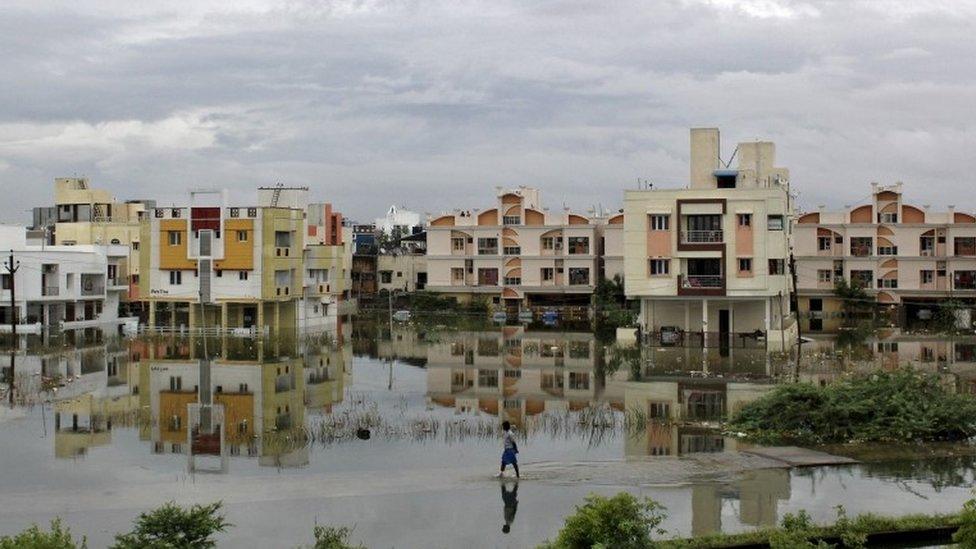
Large parts of Chennai and its suburbs are flooded
The severe flooding in Chennai again proves that India's cities are unprepared for extreme weather events like rains, droughts and cyclonic storms which are becoming more frequent and intense.
Many parts of India suffer flooding every year during the annual monsoon rains from June to September. The northeast monsoon has been particularly vigorous over southern India and more so in Tamil Nadu state, of which Chennai is the capital.
Last month was the wettest November in a century in the city of 4.3 million people. And, at 490 mm, rainfall on 1 December was the highest in 100 years.
The floods are a wake up call for India's teeming cities that were built with the expectation that the environment would adjust itself to accommodate the need for the city to grow.
Disconnect
The disconnect with nature is also manifest in the failure of planners, builders, administrators and even common people to fathom the sheer power of natural events.
The Corporation of Chennai and Chennai Metropolitan Development Authority are responsible for approving building plans and town planning, and for enforcing urban planning. A masterplan was prepared in 2008.
But much of the city has grown without a plan and with no regard to water flows, and without anticipating extreme weather events.
Then there's illegal construction.
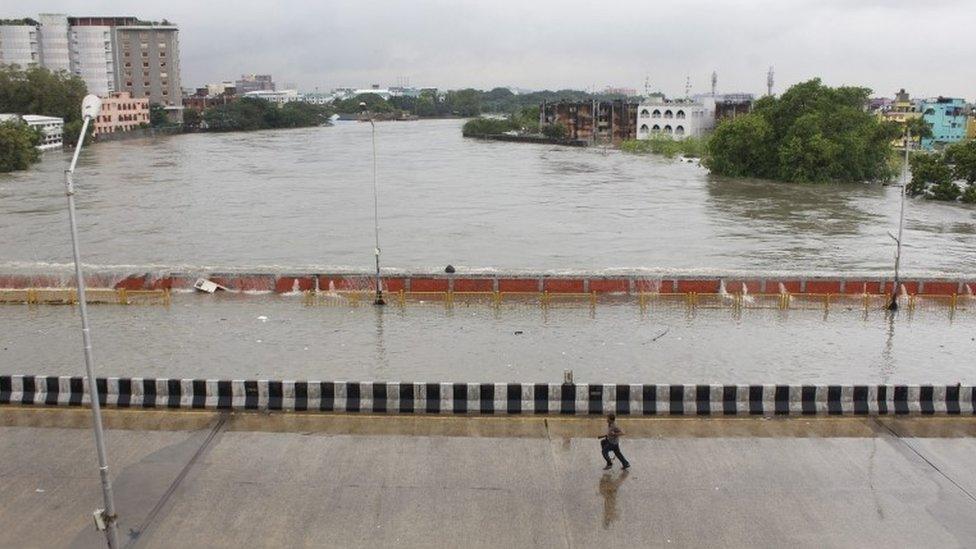
Non-stop rain for nearly a week has brought the city to a standstill
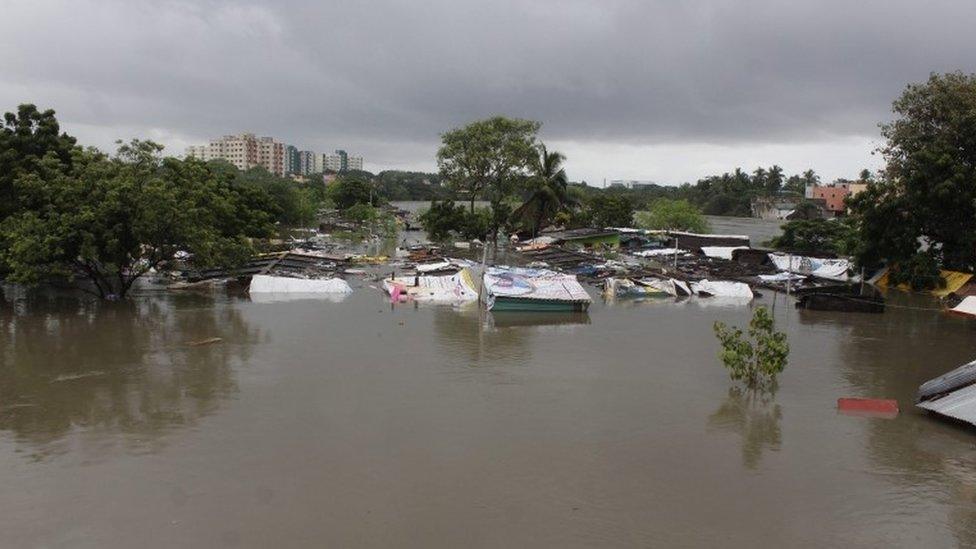
Much of Chennai has grown without a plan and with no regard to water flows
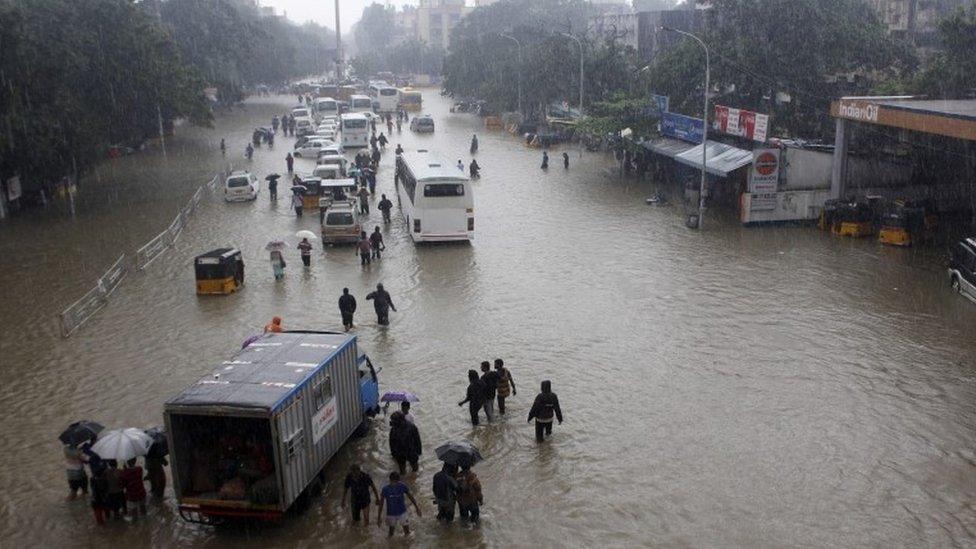
Shoddy urban planning has led to the floods in India's fourth most populous city
As The Indian Express, external newspaper reports, "What may have been a tank, lake, canal or river 20 years ago is today the site of multi-storey residential and industrial structures."
There are more than 150,000 illegal structures in the city, according to the city's municipality. More than 300 tanks, canals and lakes have disappeared.
An information technology park in Chennai is flooded because it is located at a place where waters from two separate lakes converge and flow to a neighbouring creek. Many of the city's info-tech facilities are built on marshlands, water-bodies and water courses.
The city's famous automobile manufacturing hubs are located in the catchment area of lakes.
Campus tree-felling
I was part of a campaign that accused the premier engineering school IIT Madras of clearing more than 52 acres of forest, including 8,000 trees, between 2001 and 2013, as part of a major building spree that saw 39 renovation projects and new construction take place on its campus adjoining a national park.
Following a government order exempting educational institutions from needing to obtain clearance for construction activities, the National Green Tribunal last January rejected a petition to stop construction of new buildings on the campus - but restrained the institute from felling trees without permission, as required under Indian law, external.
Plastics are another culprit. After the first intense downpour in mid-November, discarded plastic washed into rivers by rainwater was pushed to sea by the swollen rivers.
At high-tide, the plastic was thrown right back onto the city's beaches by the sea. The large quantity of plastics visible in the city's beach litter exposed another chink in the city's defences.
Plastics are virtually indestructible. What doesn't get washed out to sea tends to accumulate in water channels and storm water and sewage networks, impeding and even blocking flows.
Clearly, indiscriminate development and shoddy urban planning have contributed to the floods in India's fourth most populous city.
Nityanand Jayaraman is a Chennai-based writer and social activist
Correction 12 January 2016: This report has been amended to clarify the author's involvement in an environmental campaign and to include a subsequent development in the case.
- Published3 December 2015
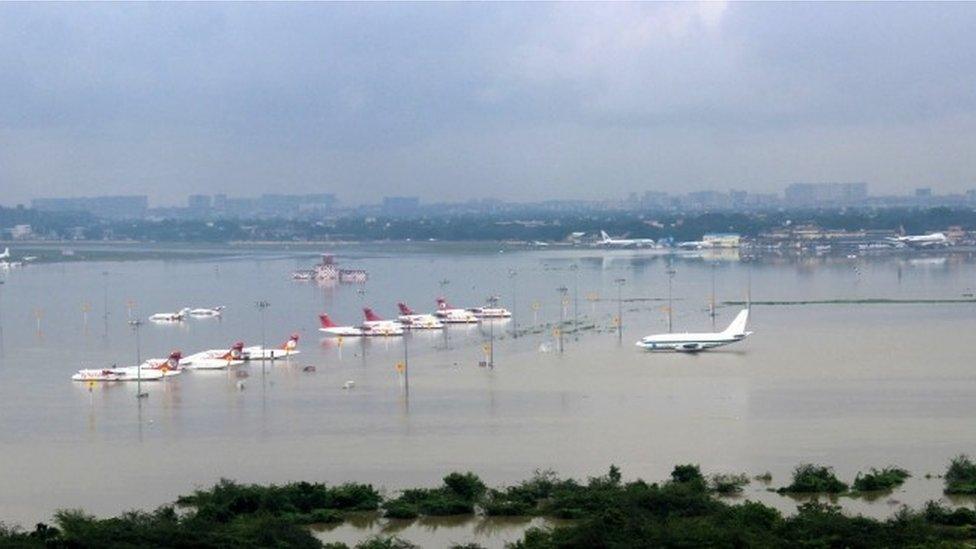
- Published2 December 2015
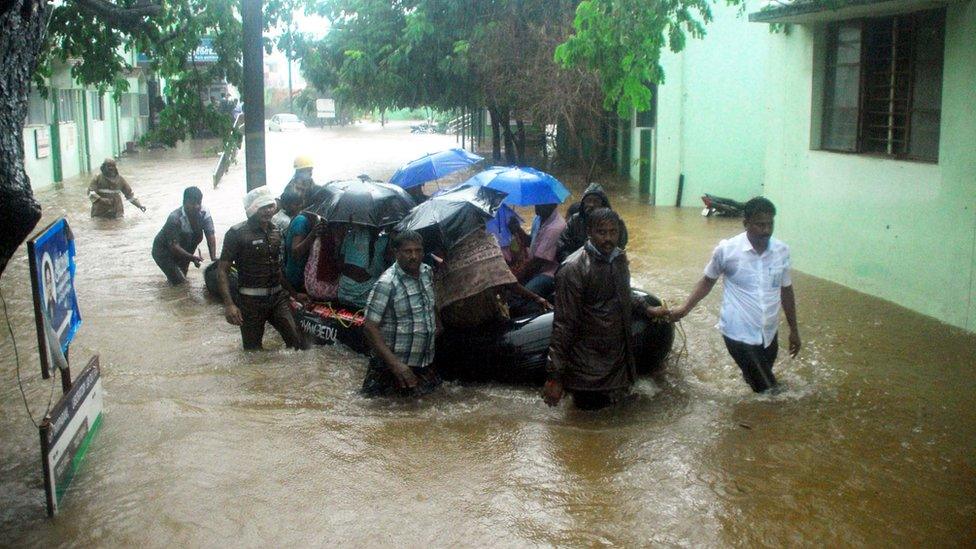
- Published2 December 2015
